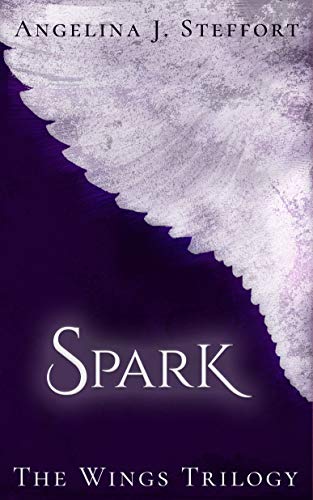BELINDA: Hot topic first. Do you think love is killing the teenage heroine and why?

ANGELINA: A really good question, and almost impossible to answer in one sentence or two. The question I ask myself is: What is a teenage heroine? What expectations do we have toward a teenage girl; or teenage girls toward themselves? Is a rebel-girl who fights against her own heart a heroine, just because admitting to her feelings would make her vulnerable? Is someone who full-heartedly and bravely loves weak? What is strength and what is weakness to begin with?
There are several ways to approach your question. It doesn’t matter if we are fifteen or fifty, love makes us either weak or strong, depending on what angle of a situation we look at. If love makes us irrational in dangerous situations, it makes us weak and it might literally kill us. If we look at it from the angle of that love can bring out the best in us, then it makes us stronger, courageous, willing to fight for something greater than ourselves. Austrian literary critic Marcel Reich-Ranicki once said “Literatur kennt nur zwei Themen. Die Liebe und den Tod. Alles andere ist Mumpitz.” Freely translated, “Literature knows only two topics. Love and death. Anything else is irrelevant.”
One of German psychologist Erich From’s most important themes about love is that it can only come from a productive person by which he means a person who has the capacity, potency and strength to give unreservedly. That would make a teenage girl capable of loving someone else–and in Fromm’s definition he includes five types of love, erotic love being just one of them–incredibly strong. Those five types include the love of oneself. A heroine should be able to love herself. Maybe that is part of her quest in a story. Aren’t stories there to help us reflect upon ourselves and grow–besides entertainment. And isn’t it heroic to face who we are in someone else’s eyes–when someone loves us?
So, in short. No. Love isn’t killing anyone. Especially not a teenage heroine.
BELINDA: Why do you think there might be a perception that romance is killing the YA heroine?
ANGELINA: In many discussions there is the issue of unhealthy relationships which is repeatedly addressed when it comes to young adult paranormal or fantasy romance books. And I agree. Speaking of romance (but not only romance), the way a lot of relationships are portrayed is deeply unhealthy.
Unhealthy relationships are poison for both sides. A lot of women have been in unhealthy relationships and we know what it means to break free from them. It is a painful process; a process that shapes us, scars us, strengthens us. And the ones among us who manage to wear those scars with pride are the ones who are the true heroines.
In my first young adult paranormal romance series, The Wings Trilogy, I gave Claire mild bipolar tendencies. It makes her less likable than a clean-cut, “strong” girl who shapes her own fate fearlessly, but gives her huge potential to grow over the series. Claire feels average, she cries irrationally, she humiliates herself unnecessarily. It is her starting point on a journey to equality, where she grows into a beautiful creature of light. It is symbolic for all the girls who feel inadequate, who can’t believe that someone could love them for who they are. In Claire’s case, her parents aren’t available to give her strong roots of self-worth. She is on her own.
I can see how this can offend people. Especially when the heroine seems like a leaf in the wind of someone else’s affection. But it also gives the readers a front row seat in someone’s personal growth, makes them reflect on their own relationships.
Sometimes we find a book “immature” because we have outgrown a particular stage of “character-development” a book addresses in our own, real lives. Maybe the need to learn self-love is not on our list any longer, so we look down on books where heroines struggle to accept, maybe even just tolerate who they are.
BELINDA: Why do you think romance is such a large part of contemporary YA?

ANGELINA: The easy answer would be “hormones” 😀
Honestly, to me there is nothing more inspiring than true love. I have to quote Marcel Reich-Ranicki again, “Literature knows only two topics. Love and death. Anything else is irrelevant.”
In my genre those two are quite often intricately webbed into each other. Vampires, werewolves, angels, demons, warlocks. All of those supernatural creatures come with one story engine that drives two fundamental human topics: attraction and survival (“love and death”). And in my genre they often come as a package deal. One’s attraction puts the other in danger of exposure, or the danger of losing one’s life), the love interests learn to deal with it and get to know each other while fighting their desires. They develop feelings rather than the sole attraction. A game with fire–more easily played if the other side is safely locked behind ink and paper–or inside a Kindle.
BELINDA: What message do you think this dominance is giving readers?
ANGELINA: I come from an engineering background, so I refer to the Shannon-Weaver model of communication (image). In my opinion, it can be applied to books the way it can to any other communication channel. While the story and the characters would be the “information source”, the author would be the “transmitter”, encoding the story’s message into a specific setting, wording and way of delivery. On the other side is the reader, receiving the signal, decoding and interpreting it into a message they find in the words, and nestling it into their memory. What message comes across is up to the receiver. What are their prior experiences? Who are they? What expectations do they have toward a book, or a genre? I tend to believe that readers are smart and can make up their own minds about what a story means for them; also about what to do with that romance-boom.

BELINDA: What would you like to see more of in YA fiction?
ANGELINA: The young adult books that I have read display a variety of romantic relationships. What I would like to see more is humor. Couples who laugh about themselves. Open vulnerability; if someone has gone through a lot there is a point where fears and flaws are no longer of any importance. They lie openly between all involved, showing exactly where we can improve and what we simply need to accept.
Strong, perfect characters are uninteresting for me as an author. If a character has transcended into a flawless personality, there is nothing to write about but how awesome they are, and who wants to read four-hundred pages of that 😀

It is the quite opposite: it is flaws that make us human; flaws that give us room to grow, to be courageous. Sometimes, when we realize the strong person in front of us started out where we are now, that inspires us to grow.
Another topic I would like to see more is that love isn’t enough. All the epic love stories in history, the Romeos and Julietts of history, they all end when the lovers can finally be together. But is that true love? What would have become of them if they would have had to share their daily lives together, if Romeo had forgotten to take the trash out, if Juliett had “not been in the mood”, or if their kids had a stomach virus? Who would clean up? Love that survives the routines and emergencies of daily life is the type of love I would like to see more. But, maybe this is the difference between blazing, teenage first love and mature love between equal partners. Maybe this is where the genre makes its cut.
BELINDA: Who are some of your favourite YA heroines? What do you love about them?
ANGELINA: I tend to like authentic characters, doesn’t matter if it is Charlotte Brontë’s Jane Eyre or a contemporary heroine like Isabel from Cassandra Clare’s Mortal Instruments. Isabelle is vain and at the same time so vulnerable, despite her strong facade. Both of them have strong beliefs and values, even though they are completely different as characters. But both of them are authentic in their pain and their growth. Authenticity is a difficult task for a writer, and I admire anyone who can create fully authentic characters.
About Angelina J. Steffort

Angelina J. Steffort is an Austrian novelist, best known for The Wings Trilogy, a young adult paranormal romance series about the impossible love between a girl and an angel. The bestselling Wings Trilogy has been ranked among calibers such as the Twilight Saga by Stephenie Meyer, The Mortal Instruments by Cassandra Clare, and Lauren Kate’s Fallen, and has been top listed among angel books for teens by bloggers and readers. Angelina has multiple educational backgrounds including engineering, business, music, and acting. Currently, Angelina lives in Vienna with her husband and her son.
Check out all of Angelina’s books on Amazon!
You can connect with Angelina on her website of follow her on Instagram and Facebook.
Featured image by pixel2013 from Pixabay.

